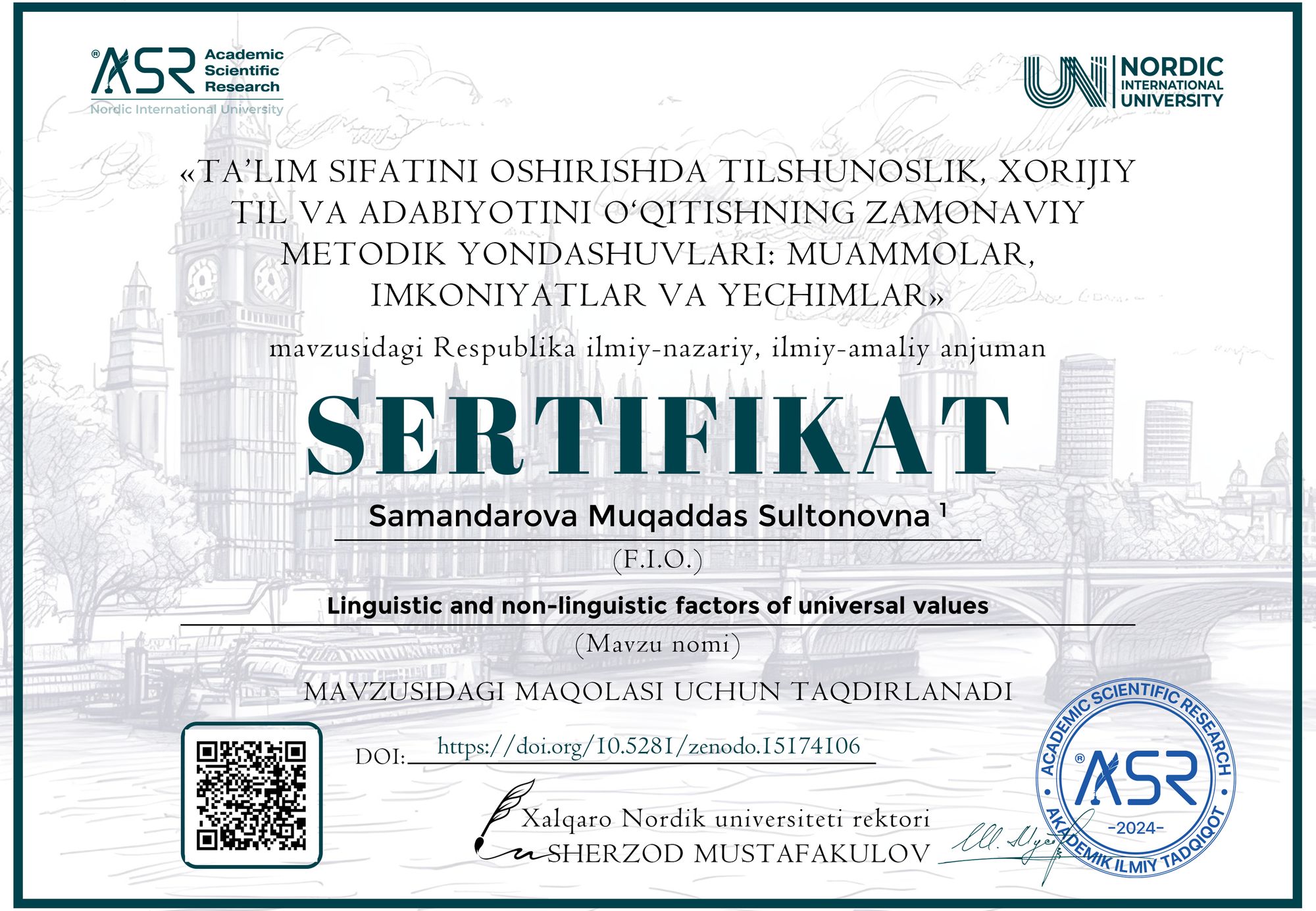Samandarova Muqaddas Sultonovna 1

DOI: https://doi.org/10.5281/zenodo.15174106
Google scholar: https://scholar.google.com/scholar?hl=ru&as_sdt=0%2C5&q=%22LINGUISTIC+AND+NON-LINGUISTIC+FACTORS+OF+UNIVERSAL+VALUES%22&btnG=
Zenodo community: https://zenodo.org/records/15174106
Nordic_press journal: https://research.nordicuniversity.org/index.php/nordic/article/view/2259
MAQOLANI YUKLAB OLISH
SERTIFIKATNI YUKLAB OLISH
REVIEW:
This article provides a comprehensive and multidisciplinary exploration of the complex interaction between linguistic and non-linguistic factors in shaping universal human values. The author integrates concepts from linguistics, anthropology, sociology, psychology, and cultural studies to build a holistic view of how values such as justice, respect, and freedom are understood and expressed across cultures.
Strengths:
Multidisciplinary Approach: The article stands out for its synthesis of various academic disciplines, drawing from both social sciences and humanities.
Rich Theoretical Grounding: References to leading scholars such as Chomsky, Hofstede, Geertz, Whorf, Lakoff, and Johnson provide a strong academic backbone to the analysis.
Diverse Examples: The article includes rich cross-cultural examples ranging from constitutional laws to family customs, mythology, and metaphorical language, adding breadth and relevance.
Balanced Focus: Both linguistic features (semantics, metaphor, grammar) and non-linguistic influences (education, law, religion, social norms) are equally addressed and interlinked logically.
Cultural Sensitivity: The work shows a nuanced understanding of both Uzbek and global cultural frameworks.
Suggestions for Improvement:
Structure and Formatting: The article would benefit from clearer section divisions (e.g., subheadings for Analysis, Results, etc.) to guide the reader through the content more easily.
Language and Style: Minor stylistic and grammatical refinements would enhance clarity. Some sentences are lengthy and may be simplified for easier reading.
Empirical Support: While the conceptual analysis is strong, including some qualitative or quantitative data (such as surveys or discourse samples) could strengthen the article’s academic rigor.
Conclusion:
This article is a well-researched, thought-provoking contribution to the field of intercultural communication and value studies. It offers valuable insights into how language and cultural environments co-construct moral and ethical frameworks across societies. The integration of scholarly theories with practical and culturally grounded examples makes this work highly relevant for students and researchers in linguistics, education, and social sciences.



